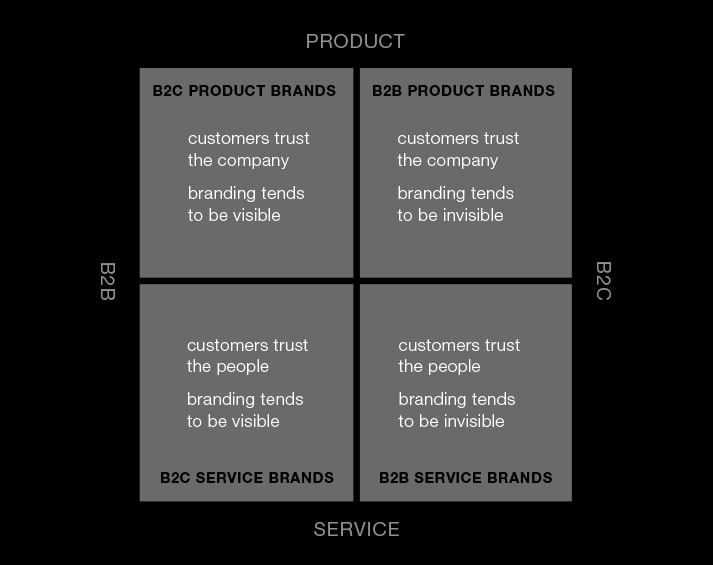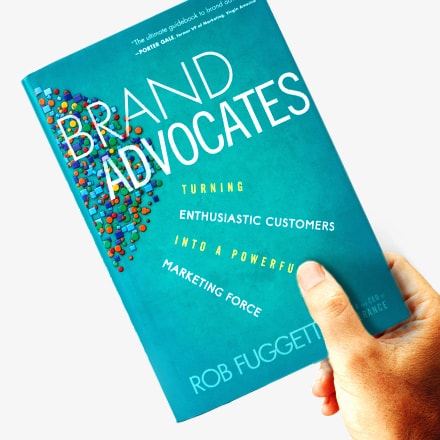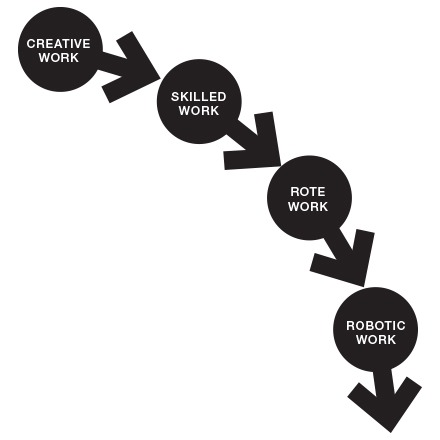Steal This Idea: B2B branding
These days it’s easy to explain branding—just cite Apple or BMW and people get it. But what about companies that don’t sell sexy consumer products—what does good branding look like to them?
Skeptics abound when it comes to the usefulness of brand in B2B and service industries. To help make the case we’ve put together a tool to explain the critical differences between companies when it comes to branding—from the most visible (B2Cs selling products) to the most elusive (B2Bs selling services).
The tool is a chart divided into four quadrants, one for each company type. Regardless of where your company lands, you’ll need to grapple with the answer to these questions: Who do your customers trust, and should your principal branding efforts be visible or invisible?
The importance of trust in branding is laid out in Marty Neumeier’s first book, The Brand Gap. He explains that the degree to which a customer trusts a product (or company making that product) determines if she buys it or a competitor’s offering. The same principle is true if a company sells services—but here it’s the people offering that service who must earn the customer’s trust.
For example: If I want someone to help me invest money, Charles Schwab might be a good choice. From what I’ve seen and heard, they seem like an investment brokerage that could help me make good decisions. But in order for me to choose them (and not their competitor), I must trust the individuals who will be advising me, not just the company.
Will advertising be the best use of my marketing budget? Not if you’re a B2B. Let’s look at the power of invisible branding.
B2B companies in particular have been slow to join the rest of the business world in appreciating the untapped value of brand. Why? Because branding efforts that are most effective for B2Bs are invisible. Execs don’t see the importance because, well, they can’t see them.
Invisible branding includes items like the CEO’s vision, employee training, pricing strategy, customer relationships, and sales force communications. This list could go on for days and every item—let me be clear—every item is part of a company’s brand.
You can read more in the previous article, Invisible Branding.
Now that you can illustrate the critical differences companies must consider in branding, download the tool in the link below and the next time a manager poo-poos branding at your B2B firm, explain the difference between their perception of what branding is, and the reality of why you wouldn’t survive without your customers’ trust and your CEO’s vision.


